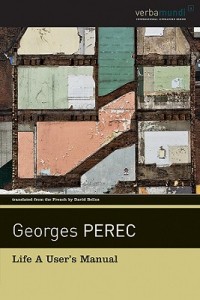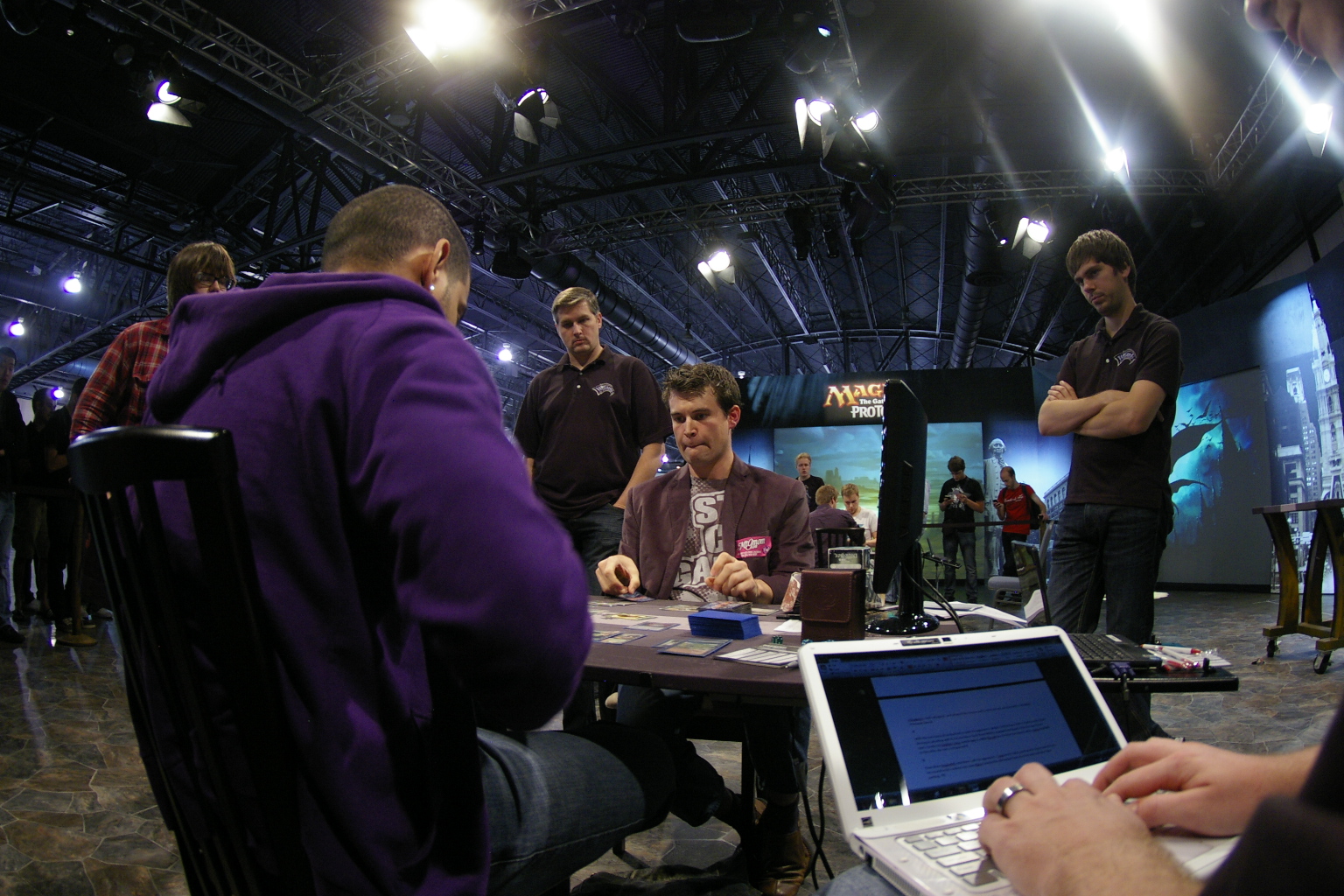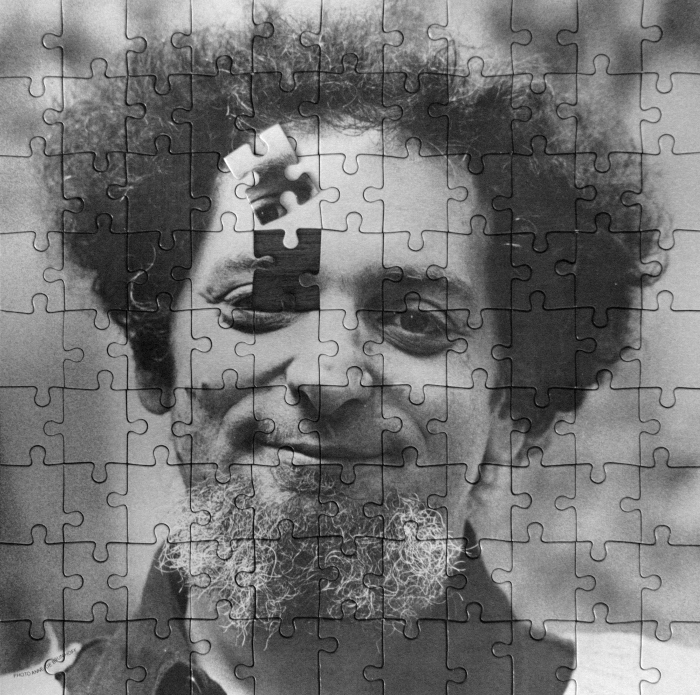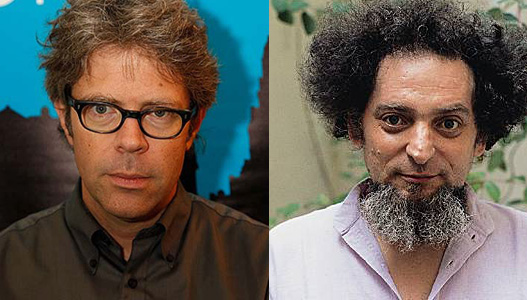Unconstrained Review of Perec’s LIFE A USER’S MANUAL
 Life: A User’s Manual
Life: A User’s Manual
by Georges Perec
Translated by David Bellos
David R Godine, 2008
685 pages / $22.95 Buy from Amazon
We were briefly offered one possible way out of the overwhelming Order that was being brandished against us: Writing, they said, could become like a kind of a game, in which the rules are made transparent, the walls clearly delineated, all objects in their proper places, the experience of reading itself an observation of the established rules left to frustrate all possible variables against themselves for the length of a poem, a story, a book. She bemoaned her loneliness, felt estranged by her intelligence, but would also brag, gripe, brag, about the capacities given unto her by her remarkable talent for finding her way around a party, the geometry of pleasing arraignment, a kid genius of the light touch, claiming she knew what to give people to make them happy, to make them like her, cried, felt lonely, spent time in and out of centers for people like her, realized that she was already older than she had thought she would be while all this was still going on for her. None of that without some grounding in truth. A little like following thirty steps of penned directions, winding up in the wrong place, and only looking toward the last step as the source of any possible error. ‘Move like a knight does.’ Couldn’t bear to be around people as bright as her, unless it was one other man. A very slow, considered move across the exposed side of a Parisian flat, moving like a knight does, in a moment that we have to assume is the only possible moment it could be written, no abutting moment qualifies, the fullest instance of a tableau, thereby, for the time being, abstracting death, in that it has ceased to approach. The quiddity of death is in its unceasing approach. Already, we are fighting an uphill battle.
Perec, Calvino, Queneau, others: Oulipians. Calvino’s Invisible Cities: One of those few books that ‘everyone loves’. Calvino: Also well-known for Cosmicomics, similarly well-loved. Those two books comprise the lasting popular of Oulipo. Queneau: Exercises in Style, a book, which, ‘it is good that they exist’, but God forbid anyone ever actually have to read it. He is cellmates with Sol LeWitt. Calvino: Whimsical (Márquez), sexually precious (Pasolini), transparently formal (Coover), with privileged access to some elemental quality of ‘the story’ (Borges). Similarly unconcerned with death—or, at least, a death that whatsoever resembles the death that awaits us poor, existent informalities. Leery of, but on the whole grateful for, him and his place in every bookshelf. Occasional shrugging permitted. People whom we had thought were our friends accused us of creating materials that the bored leisure class could use to occupy the time between now & the timelessness. Some of us responded by creating very detailed wallpaper, apparently.
Out of this, Life A User’s Manual. The most possible observation of the materials that are drawn into the orbit of a life lived, as little possible observation of what it is all these things are to act as a totem against for the persons that acted as gravity wells. For us, the limited but monstrous expansion of the gap between two instants. The first few belayed momentums, in which Perec begins to draw a line and then ceases to draw a line, produce what is best described as the literary equivalent of the phenomenon of ‘learned helplessness’, viz. if one tries something enough times, only to be rebuffed every single time, they will cease trying, will lie down, will lie there. We begin to follow a story’s arc, it is interrupted, perhaps it will be resolved in 600 pages. If it is not, I will certainly not remember which stories were not led nowhere no one saying nohow on, though I take diligent notes, though how on is never complicated. I slip into a pleasant coma. I read more quickly than usual. The music box, yes. The dusty globe, yes. What does death matter? Someone’s uncle had an adventure, once. I am being lied to, I am not being lied to, I cease desiring to rise to the occasion of questioning. Periodic conceptual synchronicities between seemingly disparate entities, as well as immediately attractive prospects (the blanking of a puzzle piece, the forged document, a mistaken identity, a murder mystery concerning a telephone), turn my anesthetized stupor into a mildly giddy audienceship. When someone is ‘poor’, it means that their clothes are rakish or their history a little more multifarious. When someone is a ‘servant’, it means that they are in a different room, or are in a different position in the same room. The thought of the form occasionally recurs, discourages active imagination. The thought of attempting to work out ‘where one is’ or ‘how far is left to go’ is indescribably unattractive.
September 23rd, 2013 / 11:00 am
The difference between a concept & a constraint, part 2: What is a constraint?
OK, back to this. In Part 1, I traced out how in conceptual art, the concept lies outside whatever artwork is produced—how, strictly speaking, the concept itself is the artwork, and whatever thingamabob the artist then uses the concept to go on to make (if anything) counts more as a record or a product of the originating concept. (This is according to the teachings of Sol LeWitt, as practiced by Kenneth Goldsmith.) Thus, we arrived at the following formulation:
- Artist > Concept > Artwork (Record)
Now, I’m not going to argue that every conceptual artist on Planet Earth works according to this model. But LeWitt’s prescription has proven influential, and continues to be revolutionary—because choosing to work with either a concept or a constraint will lead an artist down one of two very different paths. To see how this is the case, let’s try defining what a constraint is, aided by the Puzzle Master himself, Georges Perec . . .
Magic The Gathering as Literature, part 2: The Articles

Bill Stark (seated far right) documents a feature match between David Williams (seated left) and Brian Kibler (seated right).
Greetings once again from Pro Tour Philadelphia! The second day of the tournament is well underway. As you’ll recall from Part 1, I’m curious to what extent this event—and all Magic culture—is a literary phenomenon. The most obvious place to start seems to be the wealth of Magic articles produced every day by the game’s players, designers and developers, judges, and casual bystanders, some of which I think will interest the upstanding gormandizers at HTMLGIANT. Let’s take a closer look, shall we?
The Spectacle of Spectacles: A Response to Perec’s “On Spectacles”
I.
In fifth grade, a little girl whose name I don’t remember called me tacky—and I was, good god back then I was the oddest confluence of patterns and colors, bowed skirts with striped t’s, without a hint of the irony hipsters today sport—and so my older brother took me shopping. I didn’t need glasses back then, but he needed a new pair so we stopped at a little spectacle boutique, and I tried on the cutest pair of specs, equipped with rounded tortoise-shell frames, practically wire thin, that hooked around the ears. Back in 1992, I wished my vision would go awry, just so I could look intelligent and stylish. Keep in mind my distorted sense of fashion, which I have yet to shake.
Three years later, I needed glasses, my vision had completely deteriorated, though I hadn’t noticed, except that I began falling down arbitrarily, a habit that’s stretched my ankles beyond repair, and to this day, I fulfill a prophecy of falling down annually. It’s embarrassing and painful and debilitating. But when it came time to get those glasses I’d wanted so badly before, it was sister who took me, and although she’s quite fashionable, I ended up with the most hideous glasses—to large, disc-shaped, odd colors—or at least I thought they were and never wore them, such is a story of first glasses.
In high school, late high school, I got my first pair of square plastic frames, tortoise-shell, and despite my very flat bridge, I found the right pair and style. Now, when I was seventeen, I don’t remember square frames as being “hip.” None of my friends had them, preferring instead oval wire frames, usually colored, but this past January, I gave a reading in Amherst, and I stopped in a coffee shop to do “work” (and meet the very cool Jedidiah Berry), and I looked around. Hot damn, there were twelve people there, including me, ten of which had on square plastic glasses (the other two didn’t wear them), eight people had silver Mac Book Pros (two had black Mac Books), I counted three people reading Foucault and five people with Moleskines displayed in some way. And I think back to &Now or AWP, somehow glasses becoming the sign of intelligensia and creativity, commodified, like Apple products, easy, and I’ve fallen for the trick.
PRESS RELEASE: “—– — —-” by Soffi Stiassni
Our own Soffi Stiassni will be rewriting Tao Lin’s Eeeee Eee Eeee using Georges Perec’s sans ‘e’ method derived in A Void.
If you think Perec’s attempt impossible (as I did), here’s an excerpt:
Noon rings out. A wasp, making an ominous sound, a sound akin to a klaxon or a tocsin, flits about. Augustus, who has had a bad night, sits up blinking and purblind. Oh what was that word (is his thought) that ran through my brain all night, that idiotic word that, hard as I’d try to pun it down, was always just an inch or two out of my grasp – fowl or foul or Vow or Voyal? – a word which, by association, brought into play an incongruous mass and magma of nouns, idioms, slogans and sayings, a confusing, amorphous outpouring which I sought in vain to control or turn off but which wound around my mind a whirlwind of a cord […]
What is perhaps more remarkable is Gibert Adair’s English translation, just excepted, of Perec’s French La Disparition. I simply don’t know how Adair was able to translate that.
I look forward to Stoffi’s rewrite of —– — —-. I can see it already:
Andrw drivs back to Domino’s.
“Matt,” h says. “Thr’s a dolphin in the backsat. Can I go hom?”
“Lt m put ths pppronis on,” Matt says. “Thn I’ll cash you out.”
Aftr bing paid sixty-cnts gas mony for ach dlivry Andrw has fourtn dollars.
“Give half to th dolphin,” Matt says.
Which reminds me of artist Brendan Lott’s sans ‘a’ The Scrlet Letter. I think I’m gonna rewrite Stephen Dixon’s I. without the ‘i.’ I challenge someone to do The Castle without the ‘K.’
This is either high-brow Wheel of Fortune, or lowbrow Jeopardy! I can’t figure it out.



